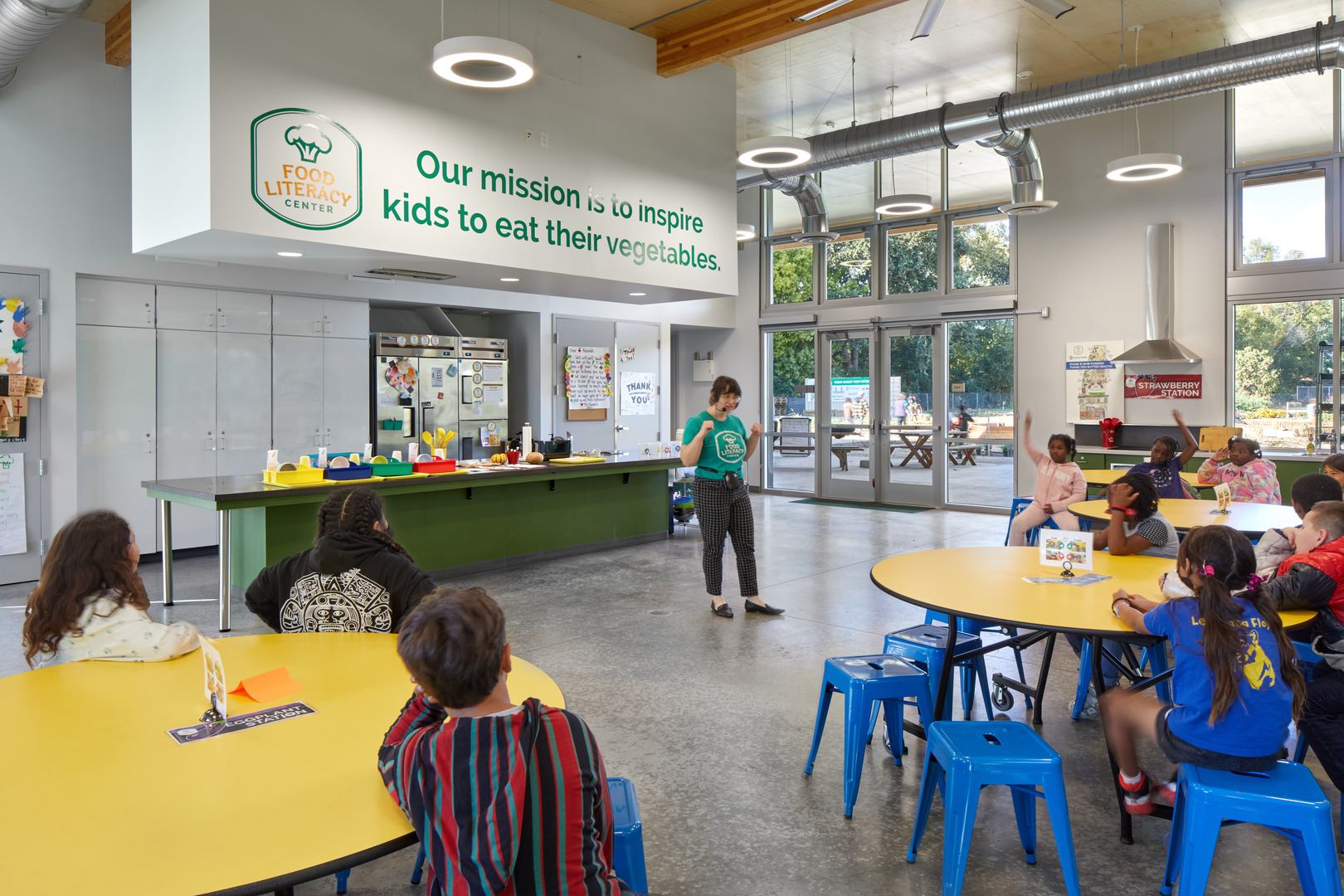Designed as a community asset, the building integrates water conservation strategies, local building materials, and a simple layout that fits in with the adjacent neighborhood and maximizes the site’s potential, all while keeping the community’s needs first in mind. Flexible classrooms and lab spaces with cooking stations, teaching spaces, and collaboration zones can be expanded into incorporating outdoor learning modalities and growing with the program. The building is oriented on an east-west axis, with a roof slope that maximizes sun exposure. North-facing windows allow for abundant daylighting, while the south entrance creates nooks for natural shading. Operable windows with horizontal louvers allow for cross ventilation. Daylight and views are provided in all regularly occupied areas, allowing a connection to the outdoors. Large indoor ceiling fans provide increased air movement, allowing for a broader range of temperature set points without relying on air conditioning. The mechanical system is energy efficient and accessible from fossil fuels. The building’s concrete foundation doubles as a floor, low carbon insulation is used throughout, and the structure and framing are built using wood with steel support where needed for longevity; together, this combination of materials will not only last, with minimal maintenance and replacement needs, but it also significantly reduces the embodied carbon footprint. Coupled with a photovoltaic system to offset the remaining energy use, the project is designed to use Zero Net Energy.
The site vegetation is native or adaptive to the area, designed to encourage a healthy ecosystem. Rainwater is collected into tanks on site and used to water the vegetation, reducing irrigation needs. The building uses recycled water on several levels, from rainwater to water resulting from Variable Refrigeration Flow (VRF) condensation.
The result is an interactive learning environment that enhances the student experience and benefits the disadvantaged community through the students’ learned skills in food and health. The facility’s educational nature will allow students and community members to experience a sense of discovery through ongoing learning opportunities, leading to a healthier lifestyle.









